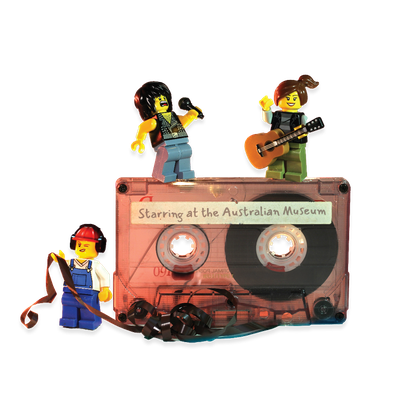Your search returned 299 results
By Page Type
By Tag
- All
- fish (966)
- blog (696)
- fishes of sydney harbour (401)
- First Nations (299)
- Blog (236)
- AMRI (169)
- archives (164)
- Eureka Prizes (146)
- Aboriginal and Torres Strait Islander (135)
- insect (126)
- Ichthyology (124)
- geoscience (109)
- minerals (102)
- climate change (99)
- podcast (94)
- Fish (91)
- Anthropology (89)
- International collections (80)
- Minerals Gallery (78)
- wildlife of sydney (78)
- Labridae (77)
- frog (74)
- gemstone (70)
- photography (66)
- history (64)
- Mollusca (60)
- gem (59)
- staff (59)
- Birds (56)
- Gems (56)
- Indonesia (56)
- education (56)
- shark (55)
- AMplify (54)
- people (53)
- earth sciences (50)
- exhibition (50)
- past exhibitions (50)
- Gobiidae (48)
- sustainability (46)
- Pomacentridae (45)
- Serranidae (44)
- lifelong learning (42)
- science (42)
- Earth and Environmental Science (41)
- Syngnathidae (41)
- Ancient Egypt (40)
- Bali (40)
- bird (40)
- dangerous australians (40)
-
First Nations learning resources
https://australian.museum/learn/teachers/first-nations-learning-resources/Access a suite of worksheets, videos and activities focused on our First Nations exhibitions and collections.
-
Cultural Collection Enhancement Project
https://australian.museum/learn/cultures/cultural-collection-enhancement-project/Cultural Collection Enhancement is a First Nations led digitisation program of collection management works built on cultural engagement and best practice principles.
-
Laura McBride
https://australian.museum/get-involved/staff-profiles/laura-mcbride/Laura McBride is a Wailwan and Kooma woman and Director, First Nations at the Australian Museum.
-
Burra
https://australian.museum/visit/whats-on/burra/Be transported on an immersive journey through the eyes of burra (eel) in the Australian Museum’s learning and play space.
-
Wansolmoana
https://australian.museum/visit/whats-on/wansolmoana/Experience the diverse and dynamic cultures of Pasifika peoples through stories and objects from across the region.
-
Learning language in GADI
https://australian.museum/learn/news/blog/learning-language-in-gadi/You probably know how to say "hello" in French – but do you know the word in Sydney language?
-
Cleansing Ceremony marks new beginning for Westpac Long Gallery
https://australian.museum/learn/news/blog/cleansing-ceremony-marks-new-beginning-for-westpac-long-gallery/Indigenous Elders recently led a cleansing ceremony in the historic Long Gallery, marking a new beginning in the space.
-
Podcast – Lunchtime Conversation Series: John Maynard on Charles Perkins
https://australian.museum/learn/news/blog/lunchtime-lecture-john-maynard-charles-perkins/Professor John Maynard discusses the life and work of Charles Perkins with Kim McKay.
-
Lunchtime Conversation 2021: Chels Marshall & Dr Mariko Smith
https://australian.museum/learn/news/blog/lunch-conv-chels-mariko/Listen to Indigenous systems ecologist Chels Marshall and facilitator Dr Mariko Smith discussing deep cultural knowledge.
-
Lunchtime Conversation 2021: Daniel Boyd and Stephen Gilchrist
https://australian.museum/learn/news/blog/lunch-conv-boyd-gilchrist/Artist Daniel Boyd and Academic Dr Stephen Gilchrist discuss the legacy of Emily Kame Kngwarreye and the importance of place and ceremony in art today.
-
Discover more
2025 Australian Geographic Nature Photographer of the Year
Special exhibition
Free entry
Now open -
Discover more
Unfinished Business
Special exhibition
Free entry
Now open -
Discover more
Wansolmoana
Permanent exhibition
Free entry
Open daily -
Find out more
Burra
Permanent kids learning space
Free entry
10am - 4.30pm![]()
-
Discover more
Minerals
Permanent exhibition
Free entry
Open daily![]()




